
Casa Cecilia: A Modern Tropical Mediterranean Farm Villa in Laguna
Located in Barangay San Bautista, San Pablo, Laguna, is a residence that looks and feels like a villa in Southern Europe. Designed by Architecture student Jolo Cecila, in collaboration with Architect Anjo Cantalejo, Casa Cecilia: The Farm Villa sits on a ten-hectare farm. Cecilia spearheaded the project when he was 20 years old, which is his first design-and-built project.

“The Project was challenging and fulfilling at the same time. Being a 20–year–old project head, it was difficult for other people to take me seriously. But at the end of the day, I approached the project as an open-minded learner. Ready to learn every step of the way from the professionals and seniors that I was lucky enough to work with,” Cecilia shares with BluPrint.
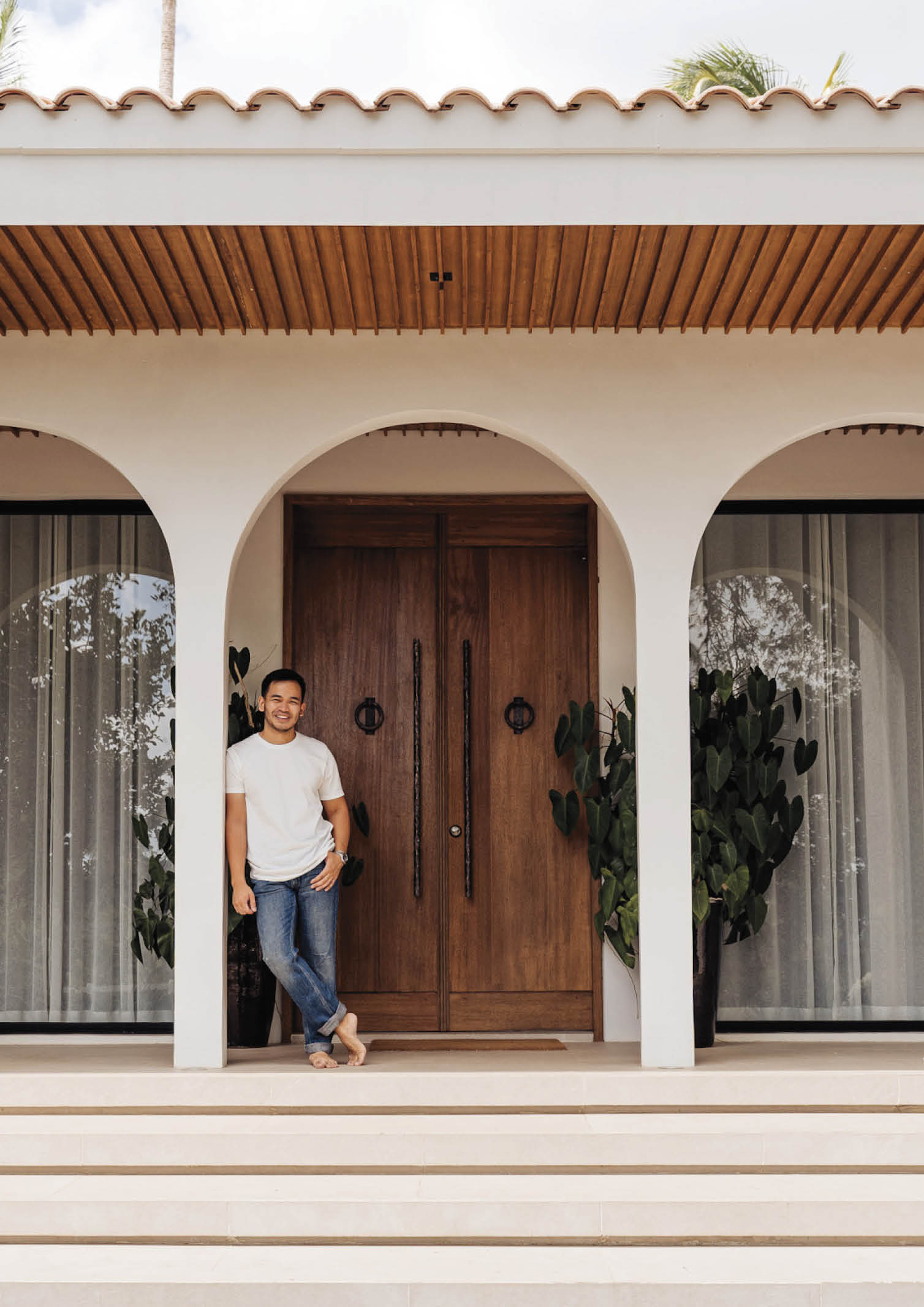
The core design team was composed of Architect Anjo Cantalejo, Interior Designer Karen Maximo-Fernando, and Engineer Alfredo Dulay. They have guided Cecilia in a way that allowed him to practice and create his own creative freedom in design. “Honestly, the process was not smooth and it had its fair share of ups and downs. From dealing with various suppliers all the way to construction workers, it was definitely a learning experience,” Cecilia said.
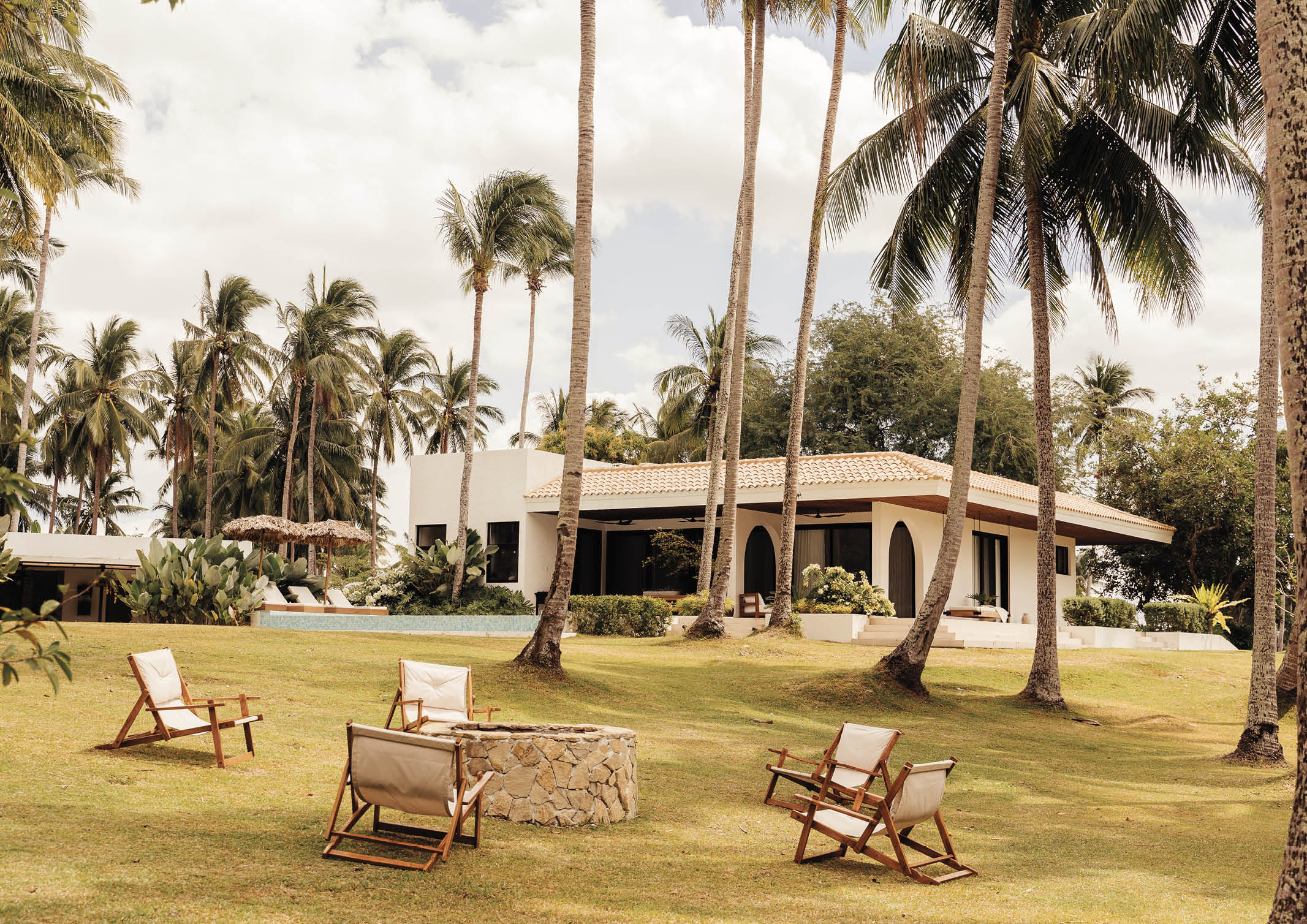
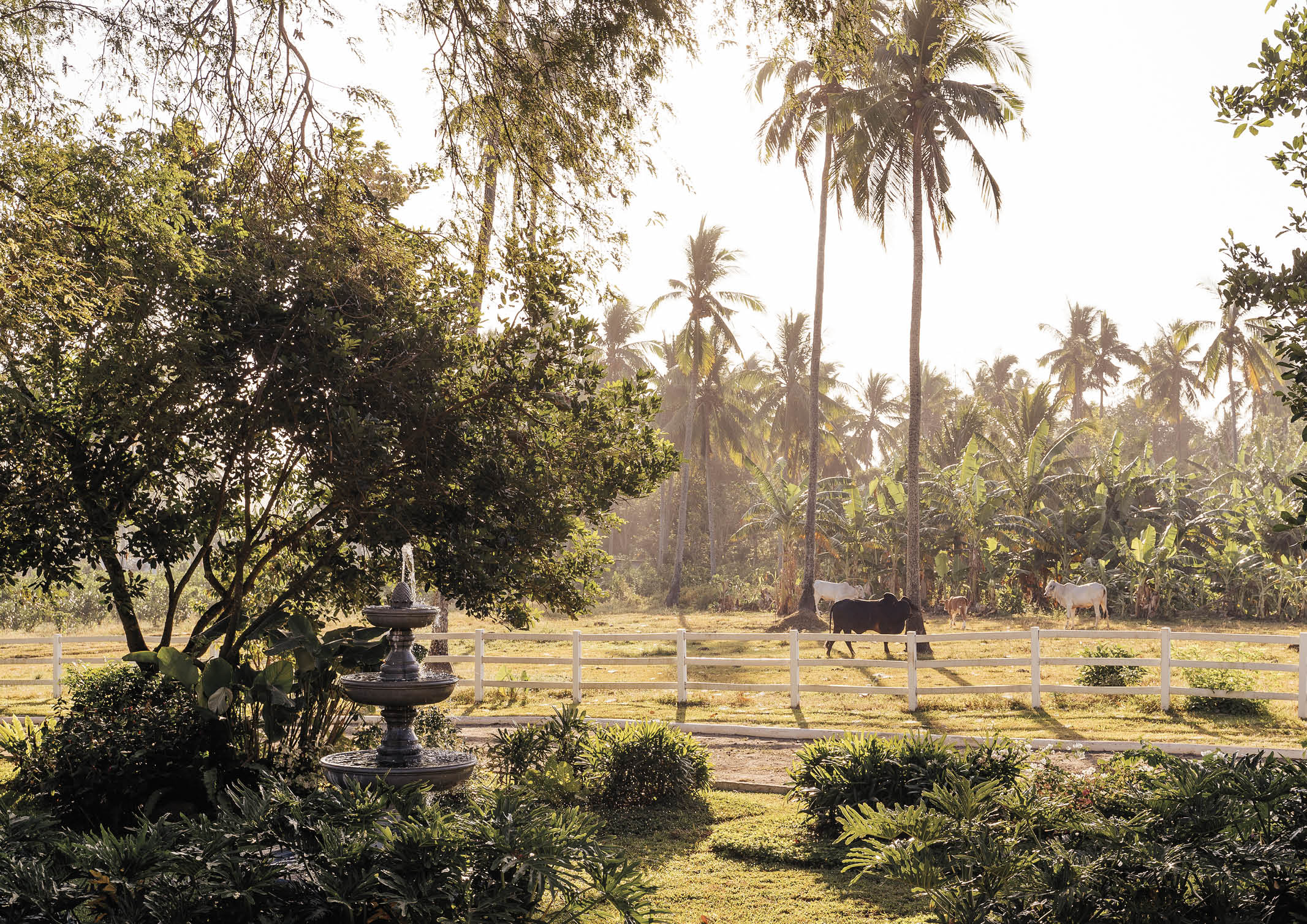
The farm villa is located on the foot of Mt. Malarayat, 100 meters above sea level. It provides a pleasant environment with the facade of the villa facing the morning sunrise of Mt. Banahaw following the sunset along the mountains of Mt. Malarayat, the cool breeze during the mornings and afternoons, and fog rolling in from the mountains. The farm is abundant with full-grown coconut trees that go up to more than 50 feet and a banana plantation that just keeps flourishing.
Cecilia explains that what makes the house unique is that it is a hidden understated villa in the heart of a traditional Filipino-grown farm in the middle of nowhere. “My design brief for the house to the design team was that I did not want it to look like a house. An architecturally distinct villa that is timeless and has a different take on a farmhouse that is set in the tropical country of the Philippines,” he shares. To him, it is refreshing and reminiscent of classic architecture given the modern tropical Filipino houses we have today.
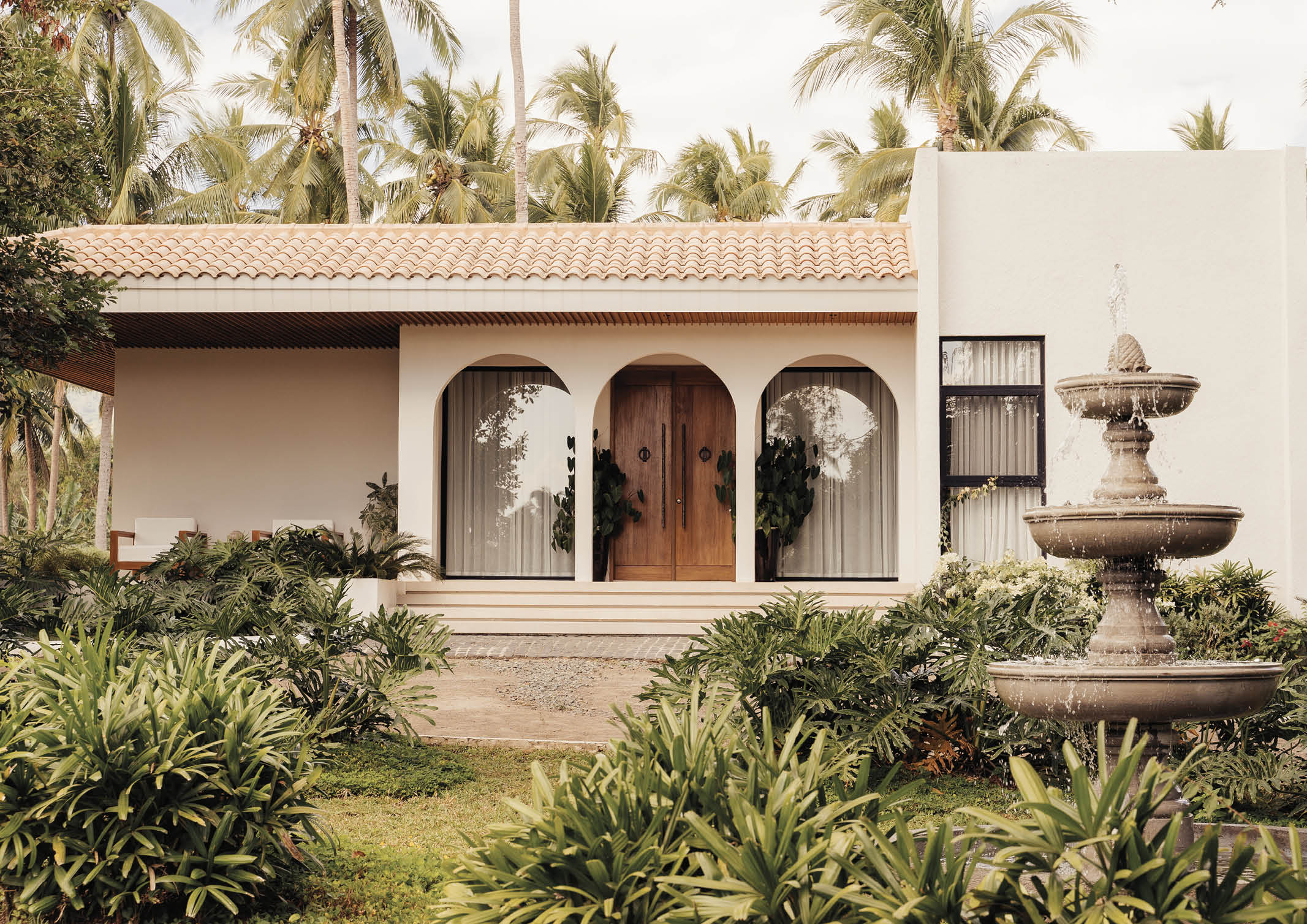

A tropical modern Mediterranean villa inspires Casa Cecilia. The design team wanted the villa to feel timeless with its architecture and interior design. It is meant to age and patina so that it gets more beautiful with character as time passes. They also wanted to bring nature in and feel the relaxed farm ambiance by surrounding the house with lush greenery. The team collaborated with Landscape Architect Lester Almazan and Architect Lj Patalinghug for the master plan.

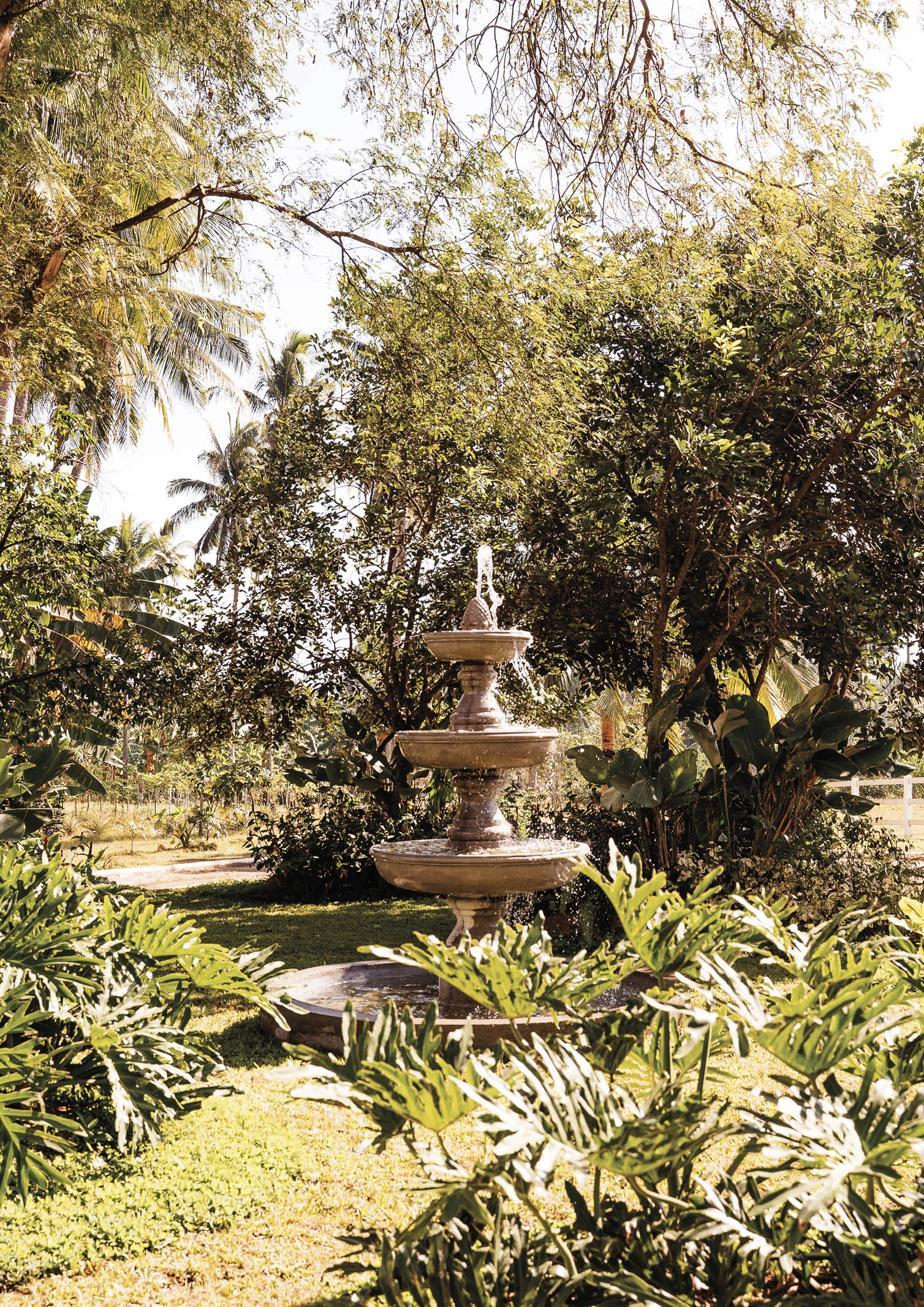

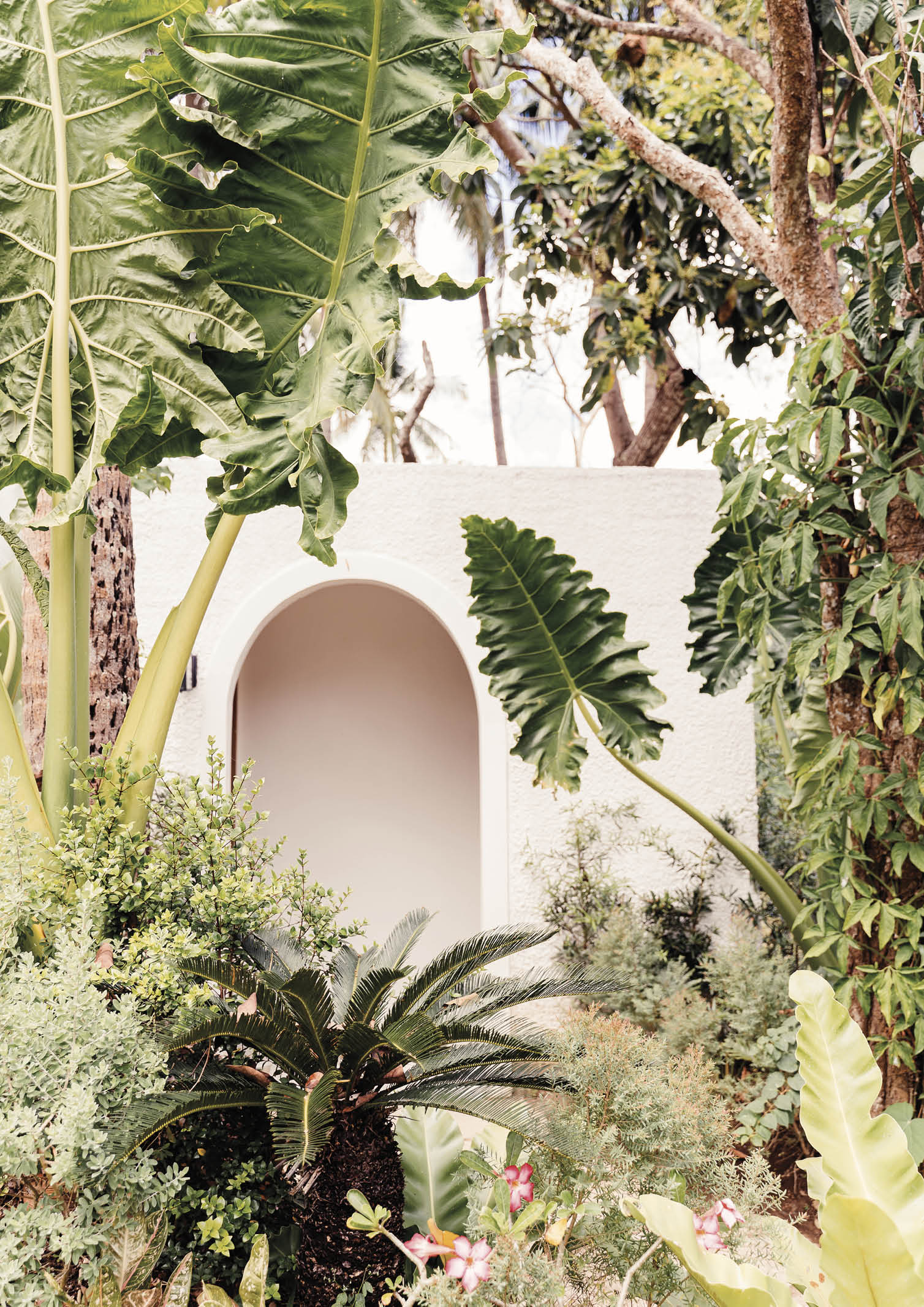
The architectural concept of the villa emulates the hacienda style design perspective, with the white repeated arches, stucco-finished walls, and aged terracotta Spanish roof tiles, with a touch of modernity. They had to blend a Spanish Mediterranean-style home into a tropical setting and find the perfect balance with the exterior finishes. The team wanted it to be simple but full of character and texture.
For the interior design concept, however, the team wanted to have an organic modern design approach. A balanced mix of modern lines and crisp white surfaces contrasted with natural forms and materials. A monochromatic white home with accents of natural elements and some pop of color through art. The design layout, which is an open layout that seamlessly connects the outdoor areas to the indoor living areas, is a design aspect that is meant to create a space where people can interact with each other and a place to bring people together.
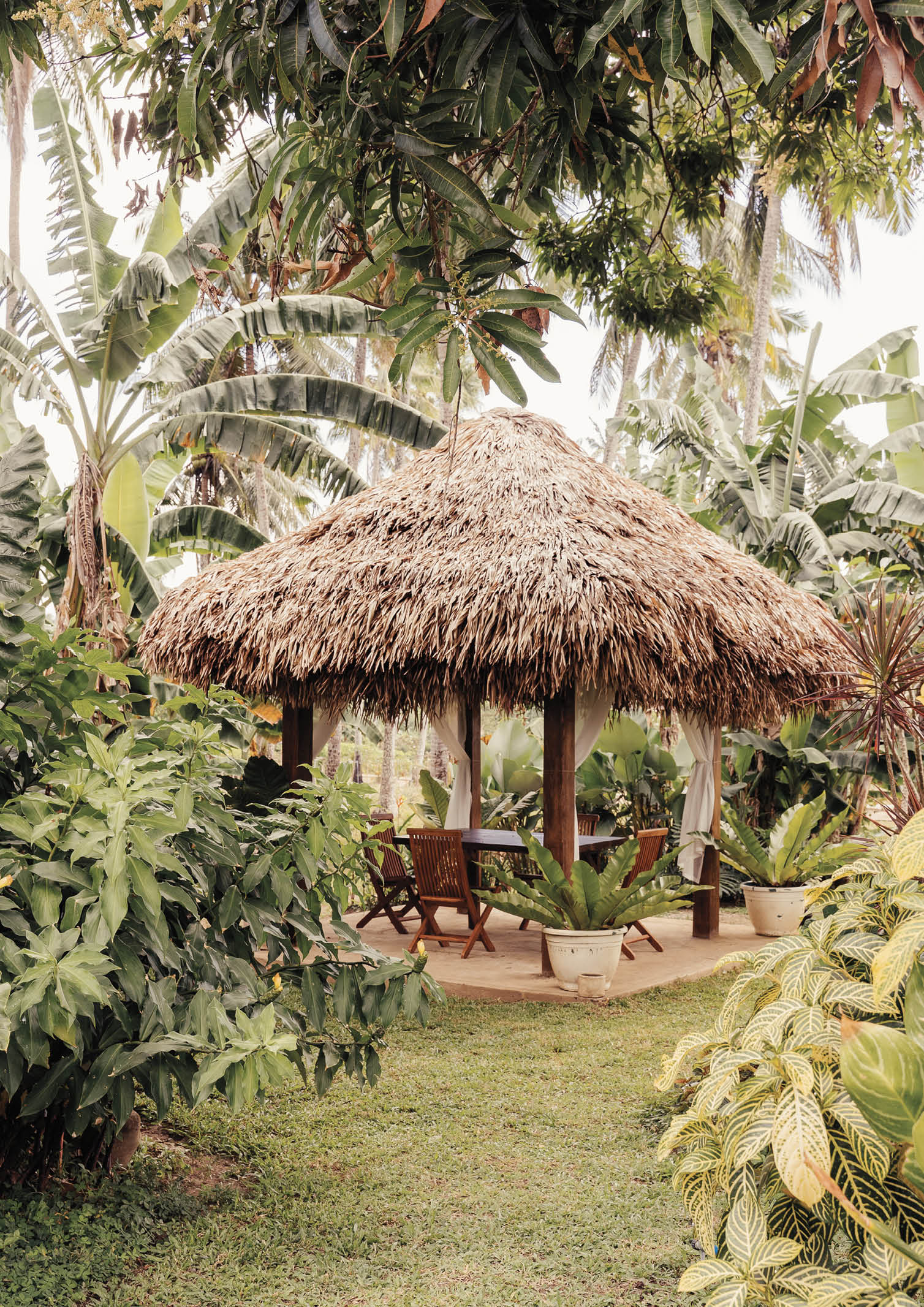
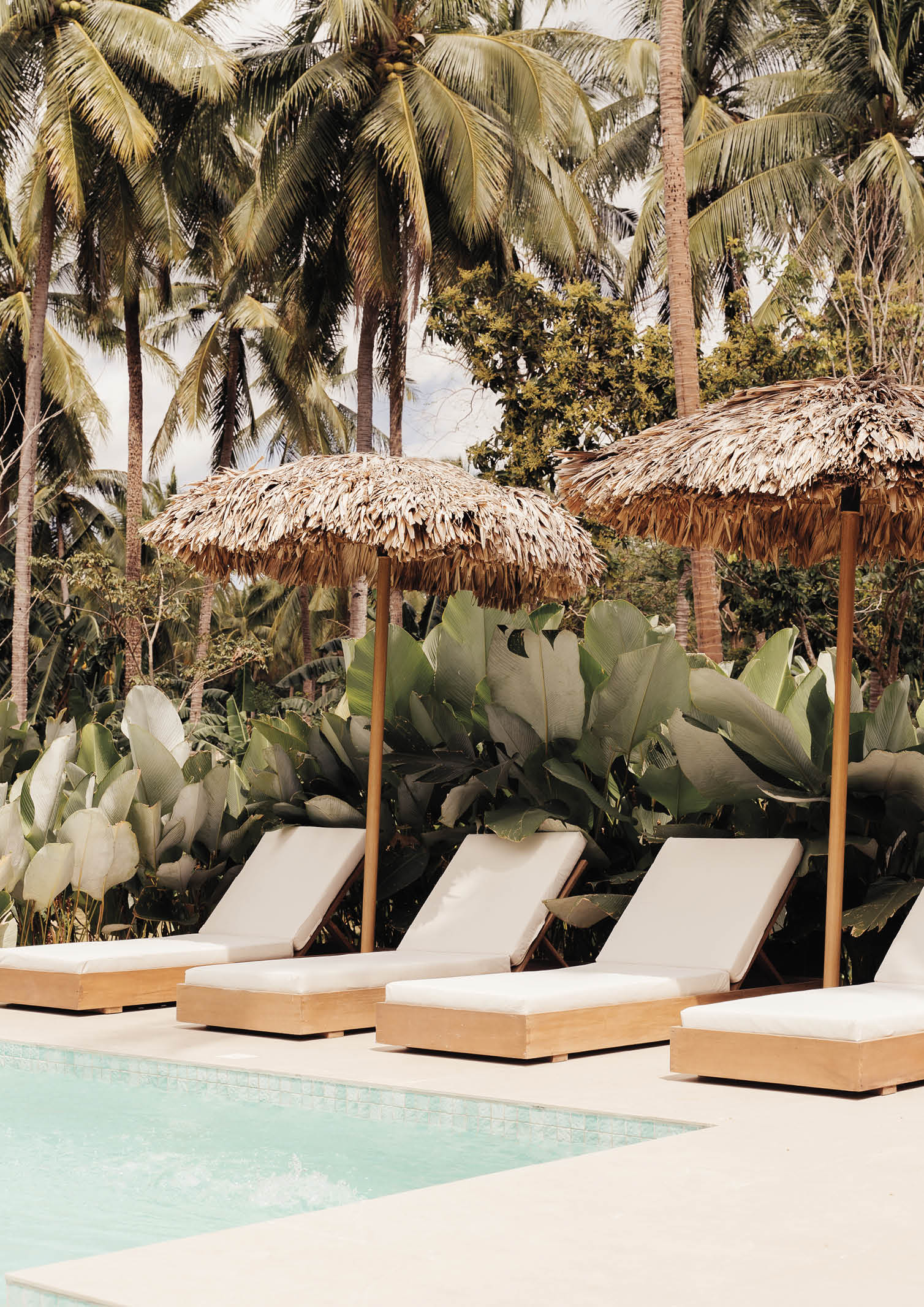
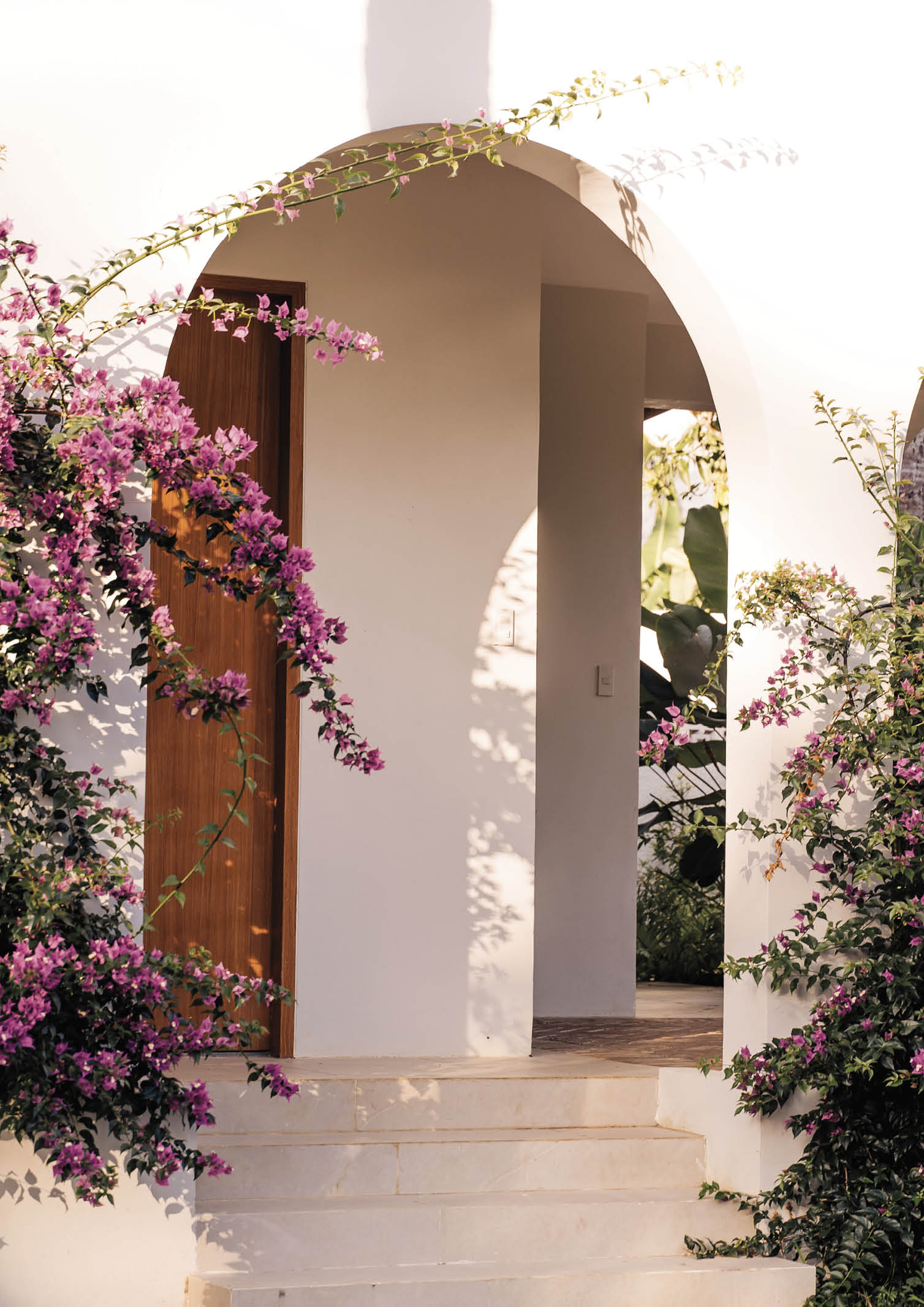
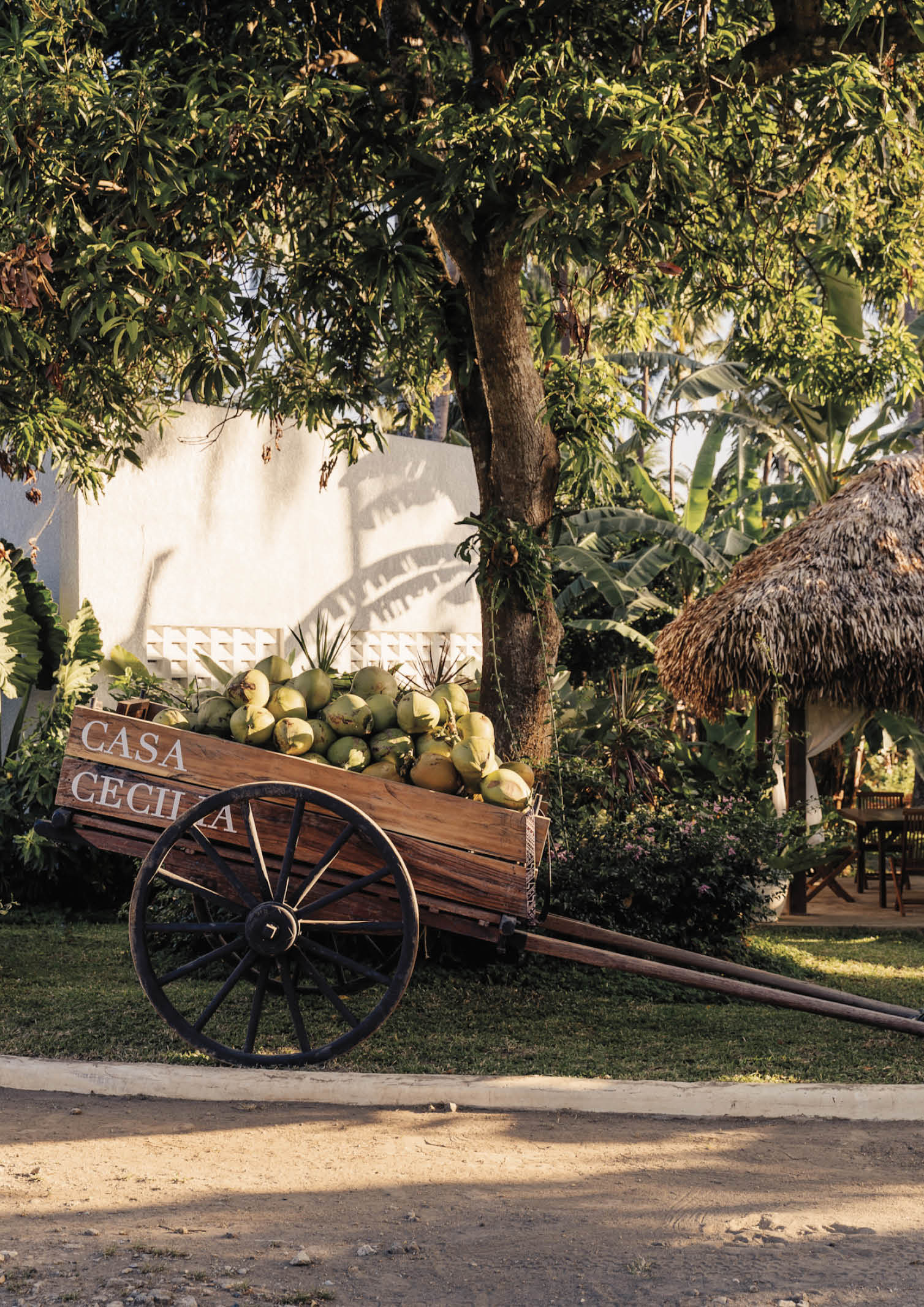
The landscape design, meanwhile, was a challenging task to combine and marry European landscape and tropical landscape design. They decided to pair the vibrant blossoming white Bougainvillea with the lush leaves of a Calathea.
“The main inspiration for the project was my parents. It was meant to be a place to escape the hustle and bustle of the Metro and embrace tranquility and stillness amongst nature. I wanted them to be able to have a home away from home, with a slower pace in their everyday lives,” Cecilia told BluPrint.
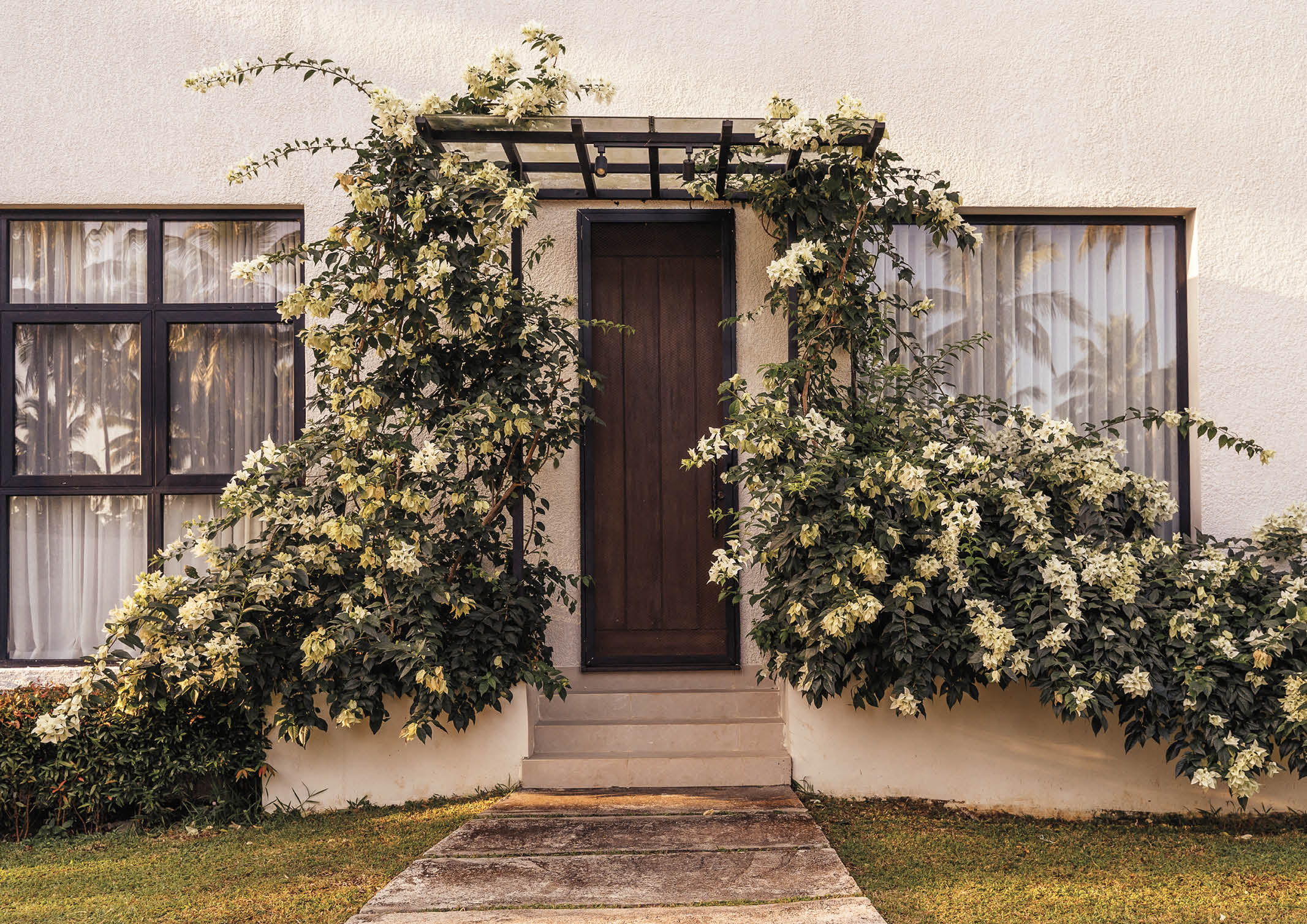
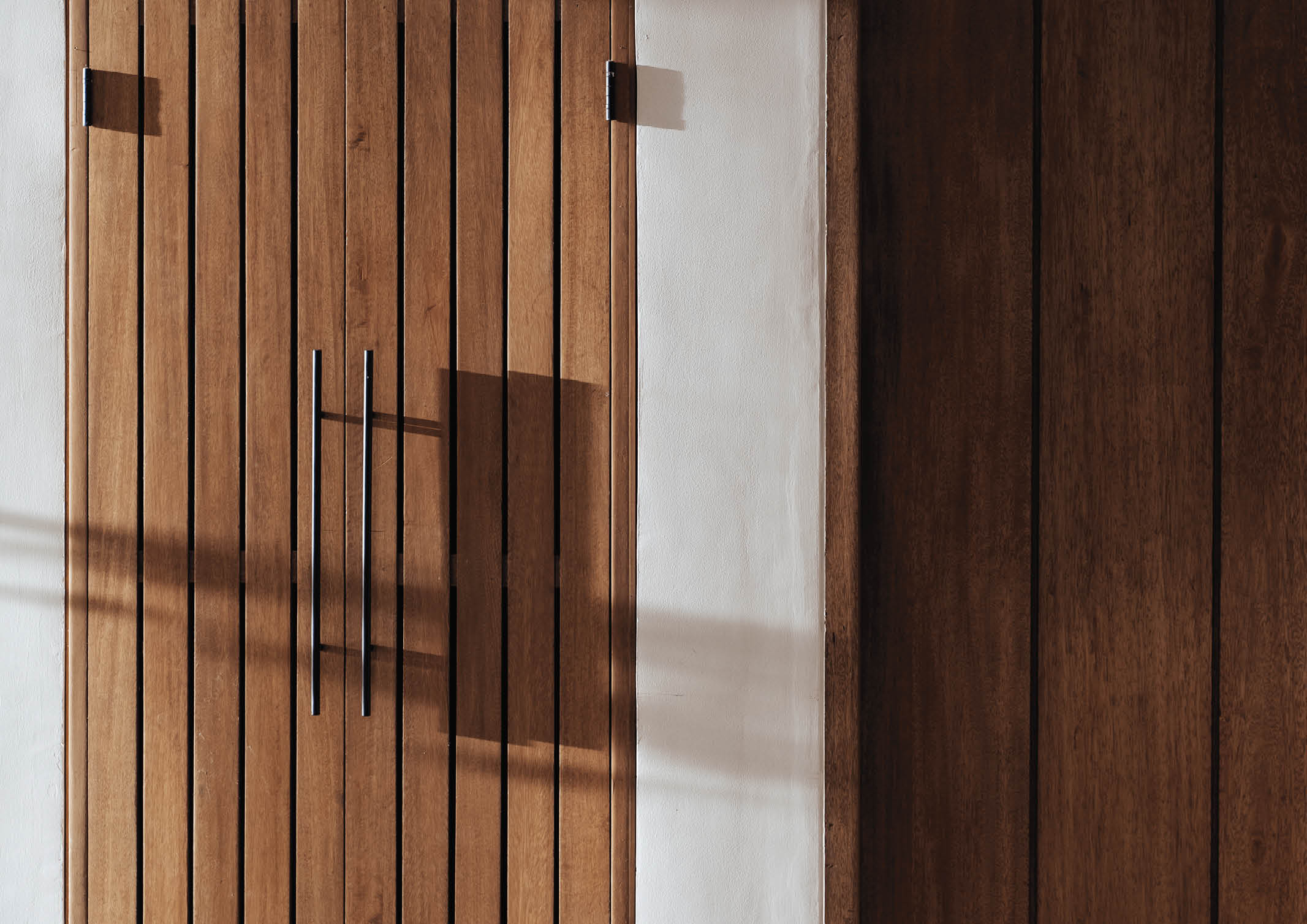
When it comes to the materiality, the design team tried to keep it minimal and as simple as possible. They have intentionally used a combination of cement-textured and crisp white walls to serve as a contrast to the characteristics of the varying wood in the space. Natural materials and raw organic finishes were mainly used in the villa to pay homage to the beauty of the nature that surrounds it, and how it allows it to elegantly blend in as supposed to be a stand-out.
Moreover, the aged-stained Terracotta roof tiles from Spain have brought in the classic feel and character of a Spanish Mediterranean-style home. Limestone paint was also utilized in the interior of the home to give emphasis and relation to the surfaces present in the exterior walls, and to the classic technique of European-style homes.
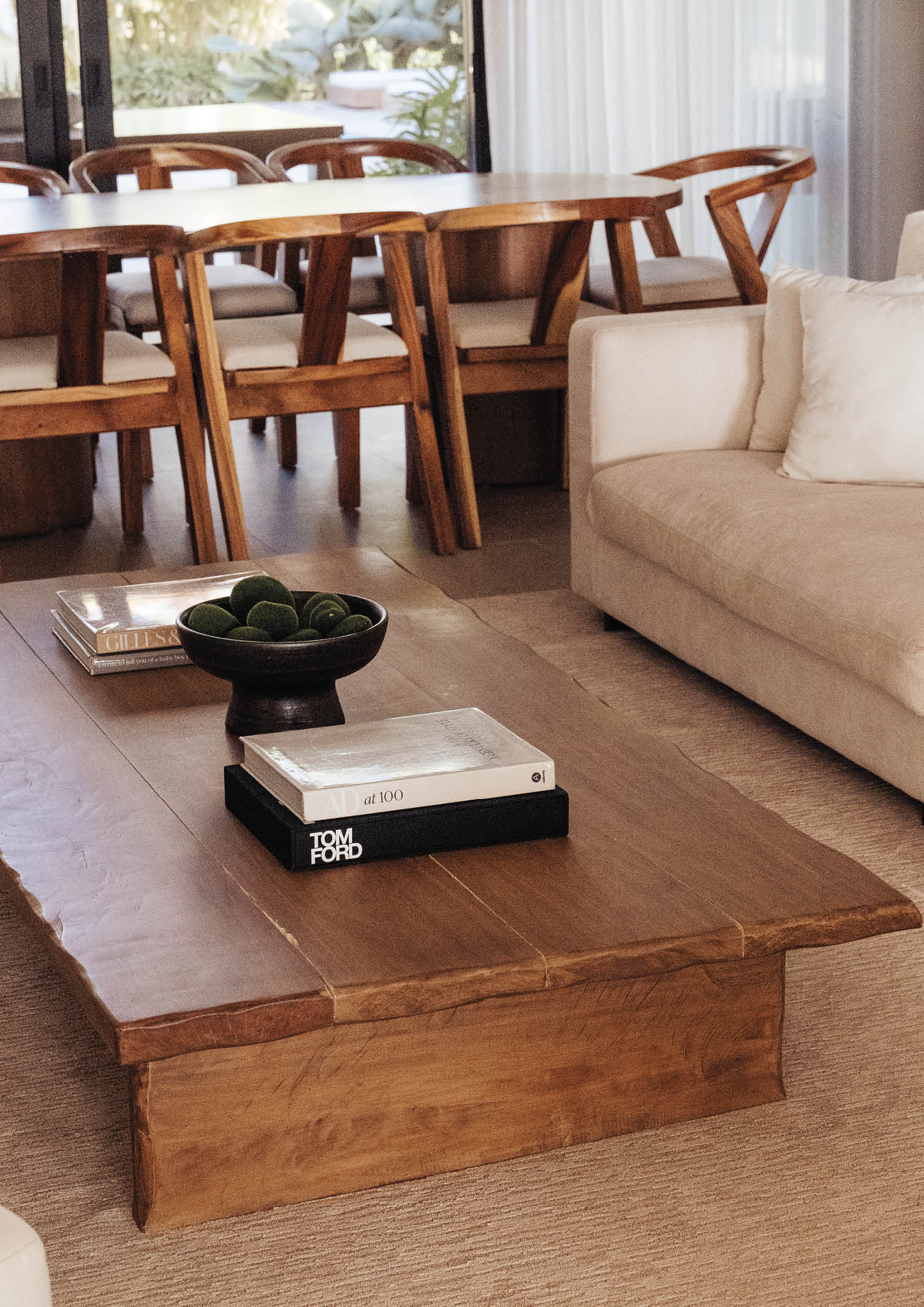

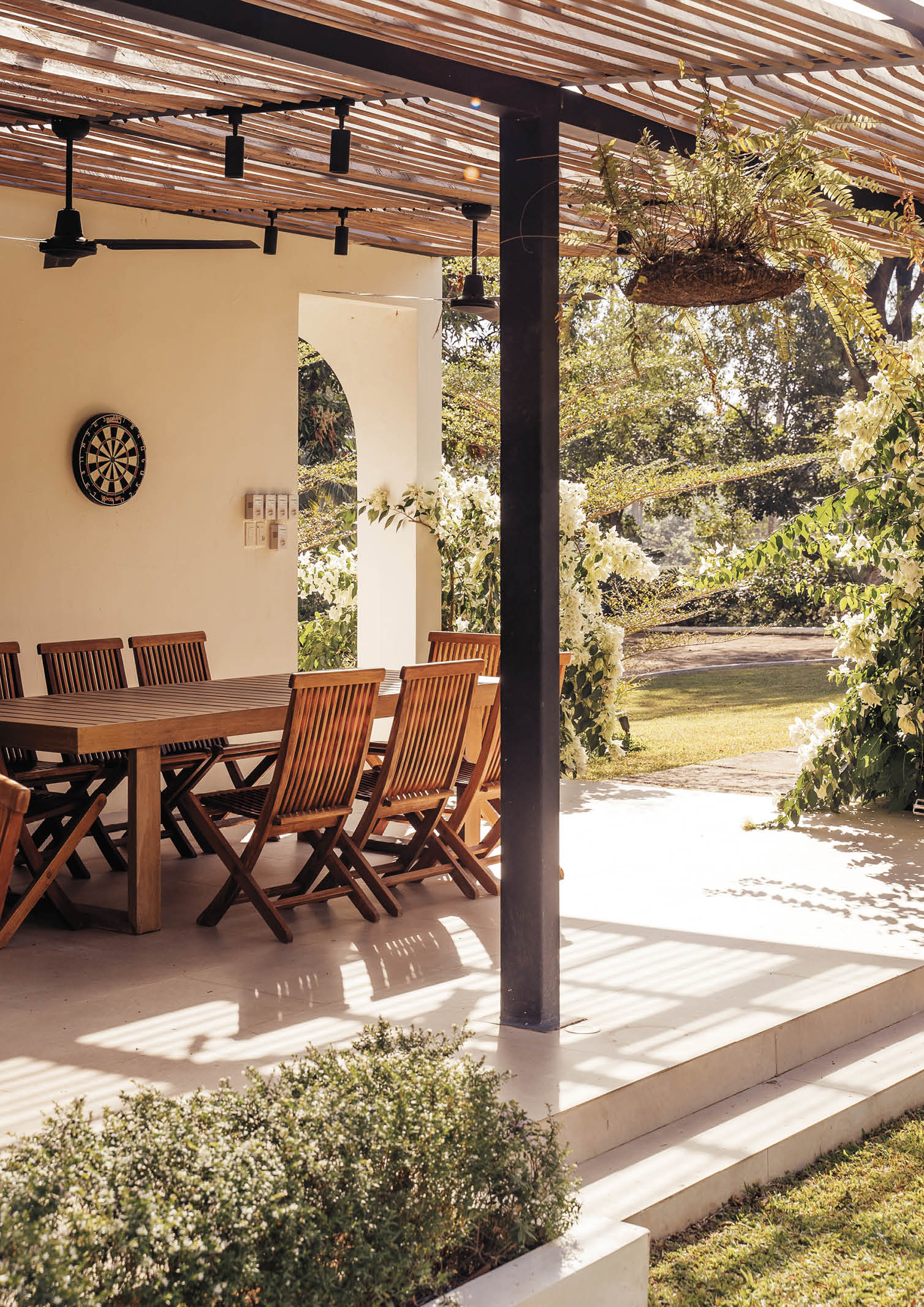

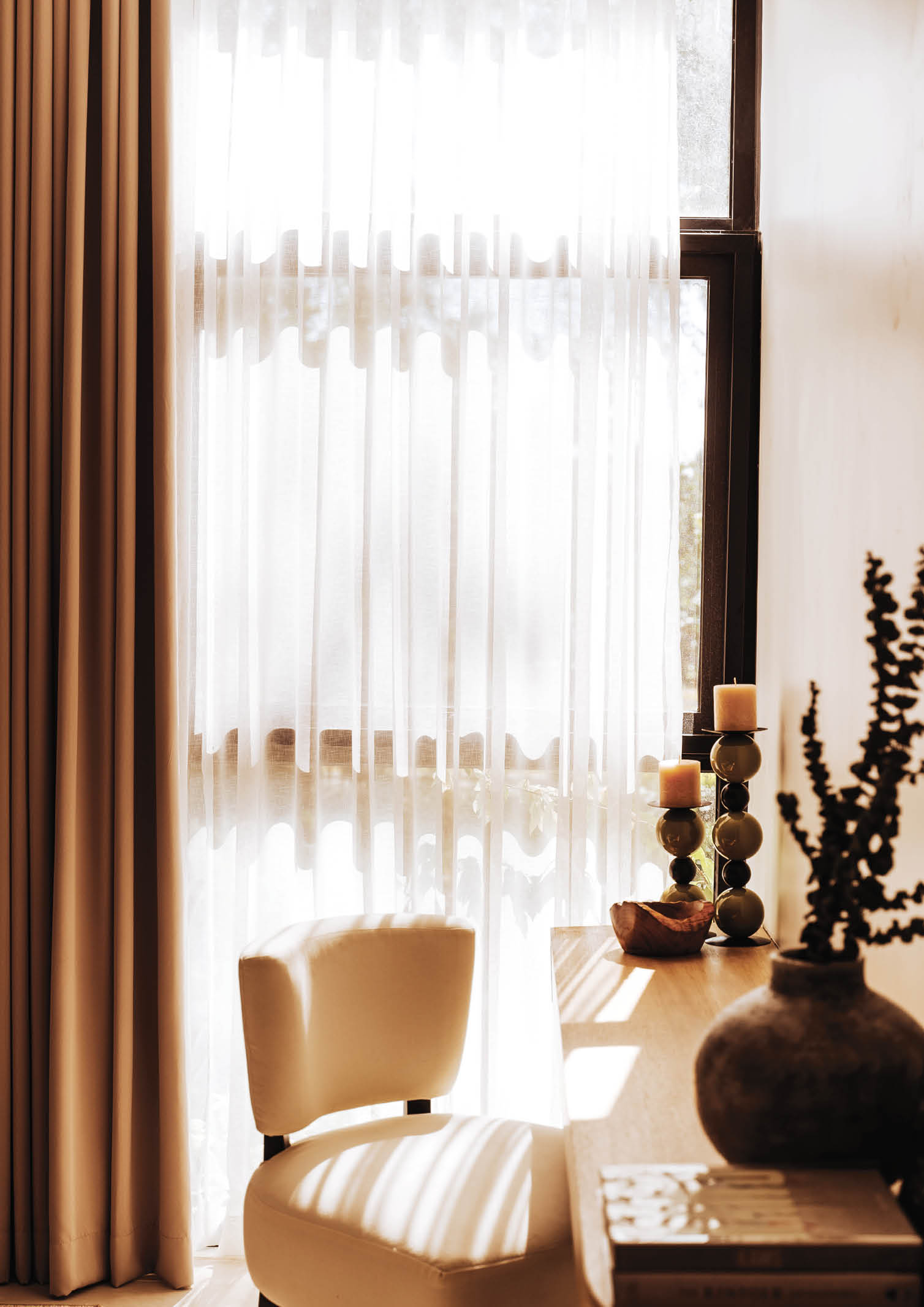
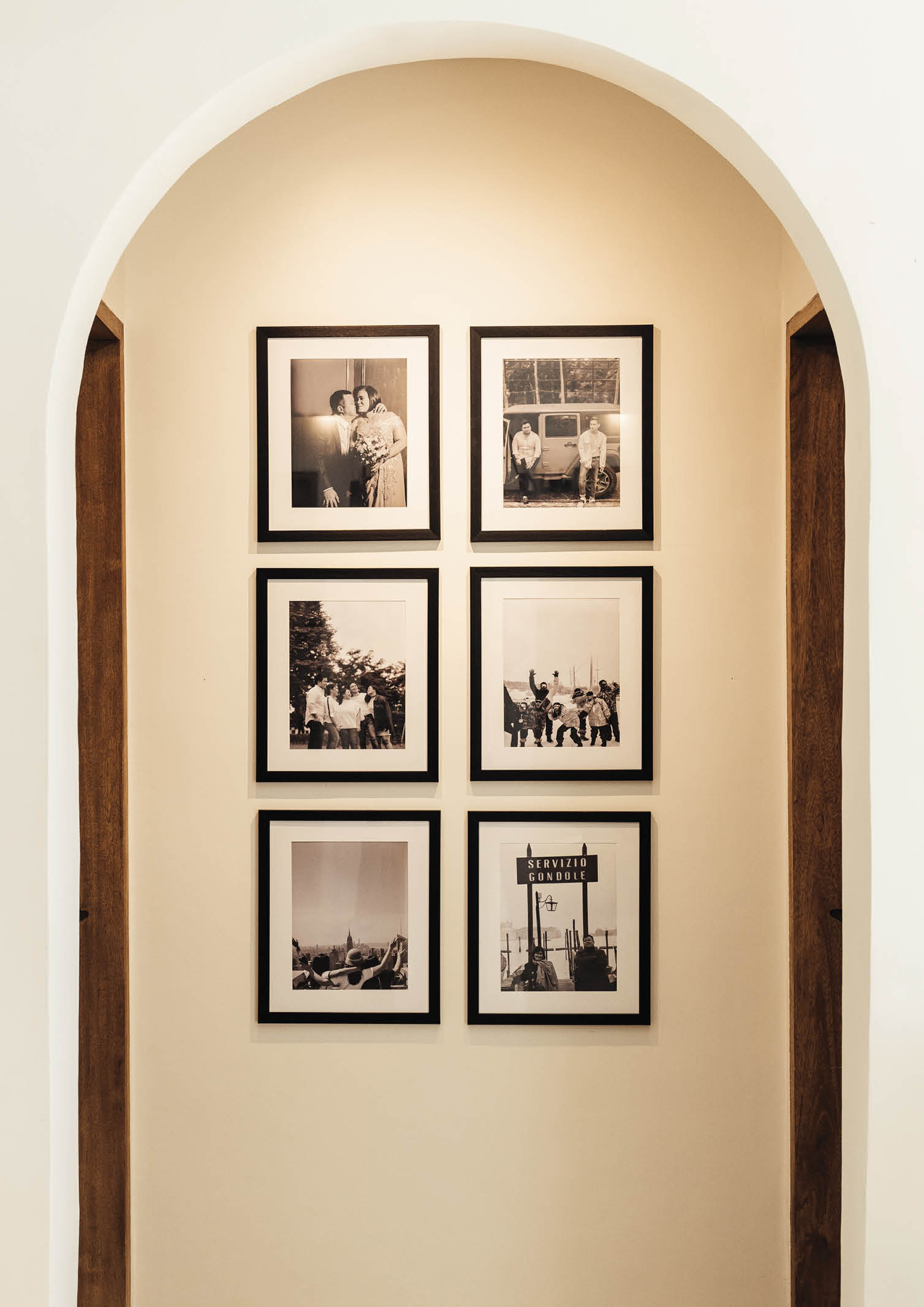
The floor-to-ceiling glass panels by Aust-Phil, added that modern touch to the villa connecting the outdoors at the same time. Spanish tiles are placed as the primary flooring for the whole structured areas around the farm. The limestone-finished floor tiles added that subtle effect. The wood accents that are placed as exposed beams and the eaves of the villa added the right amount of warmth to the space. The understated woodwork done through the 12-foot doors is remarkable with its impact despite its simplicity. Matte-black metal finishes and hardware were added to add structure, streamlines, and contrast to the villa.
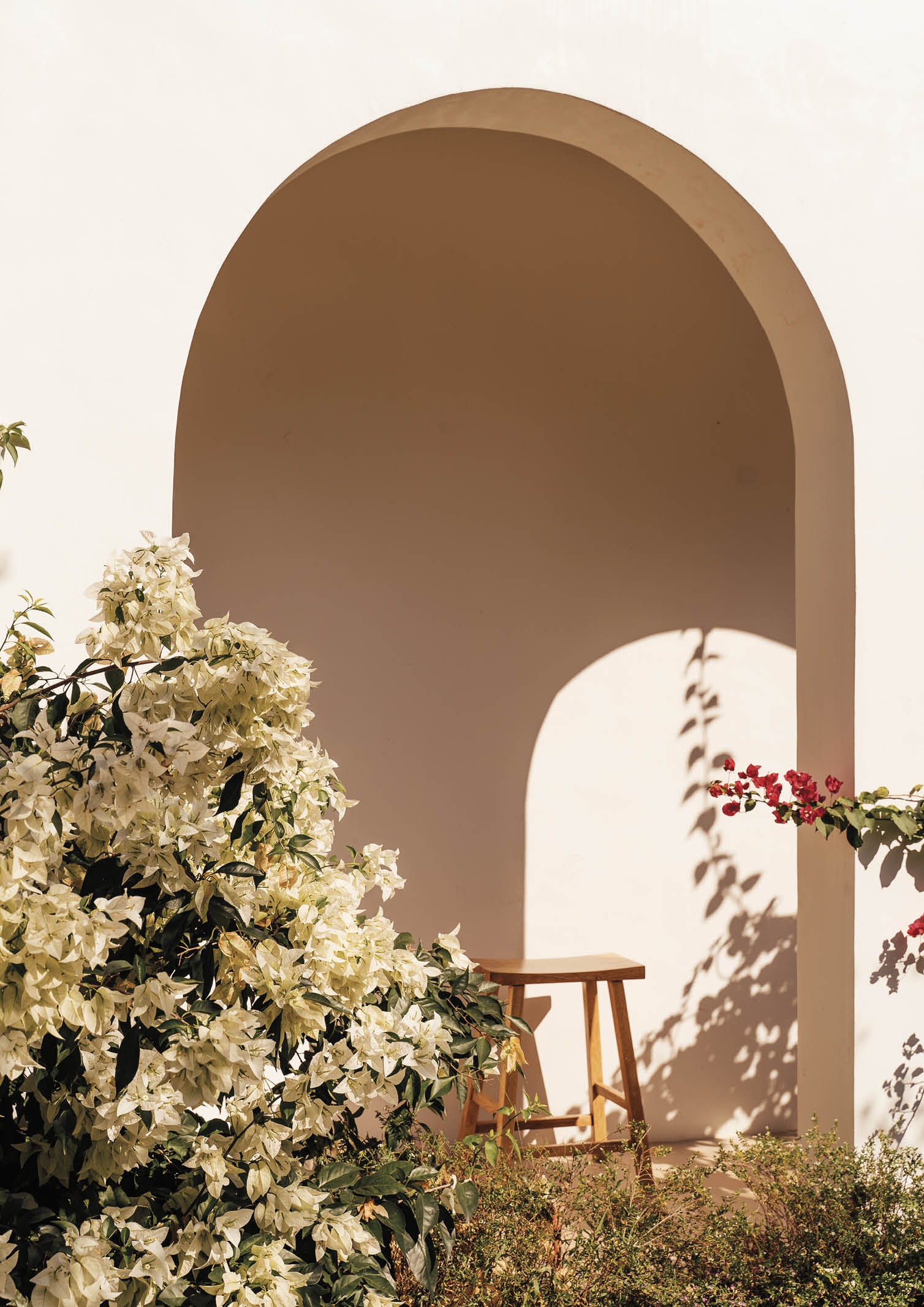
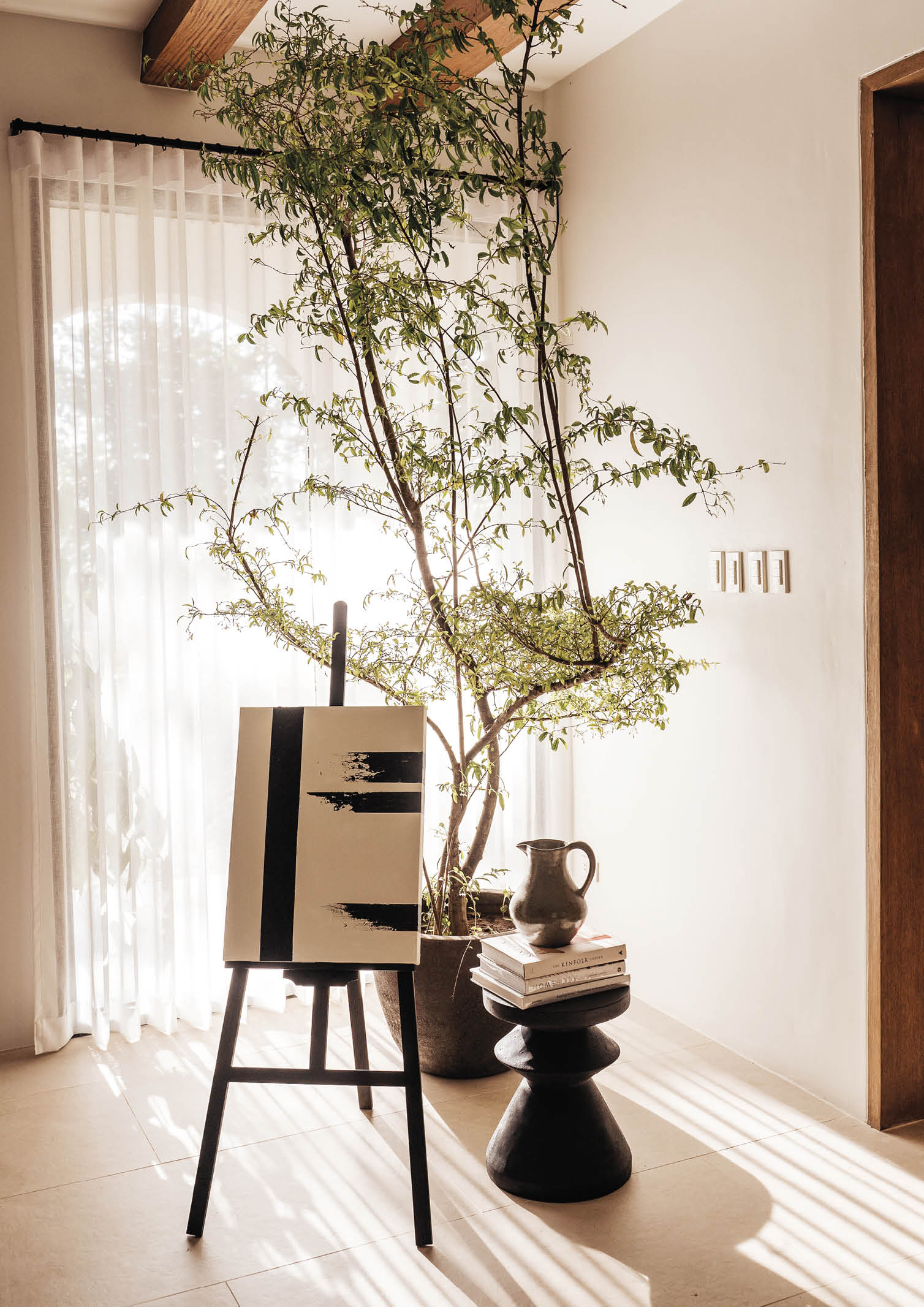

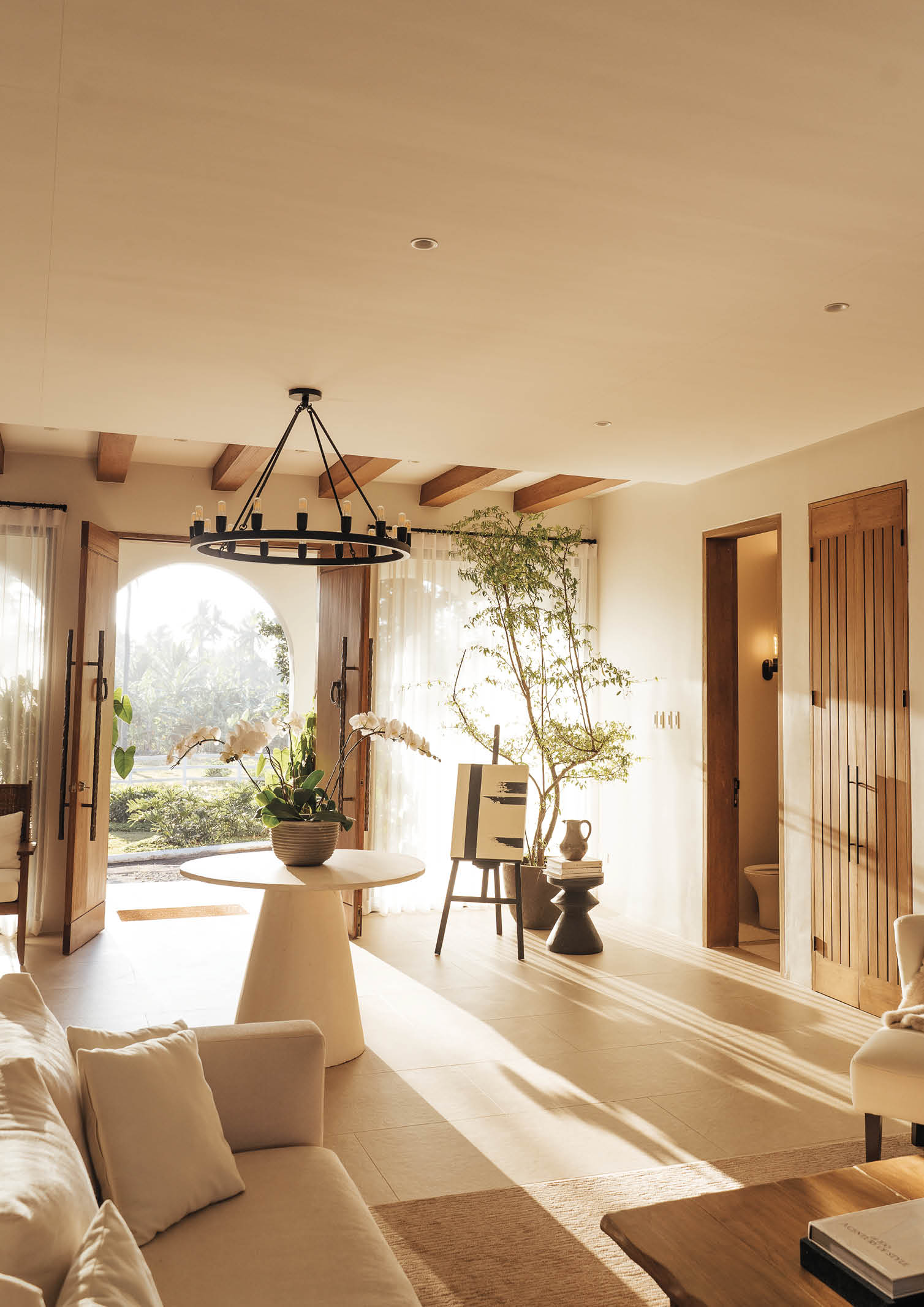

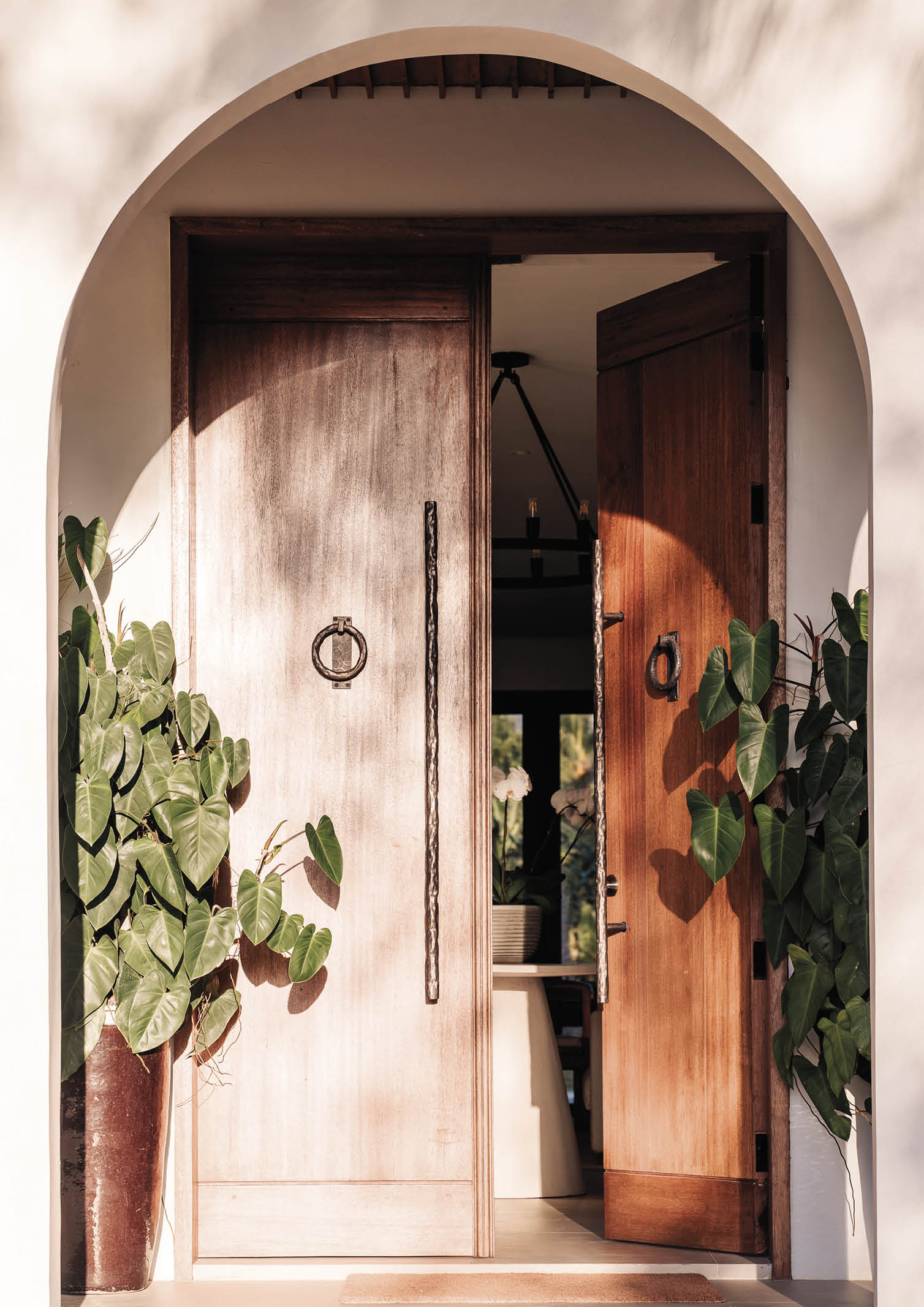

Despite having Mediterranean influences, the project has championed Filipino values in its own ways. Bayanihan, for instance, were present during the completion of the project according to Cecilia. “Almost 80 percent of our workers during the construction process came from our neighboring farms. As much as possible, we wanted to provide livelihood around the small community that we have and help them attain a certain level of skill with the help of our onsite engineers, whether it is; basic masonry, paintwork, and even welding works.”
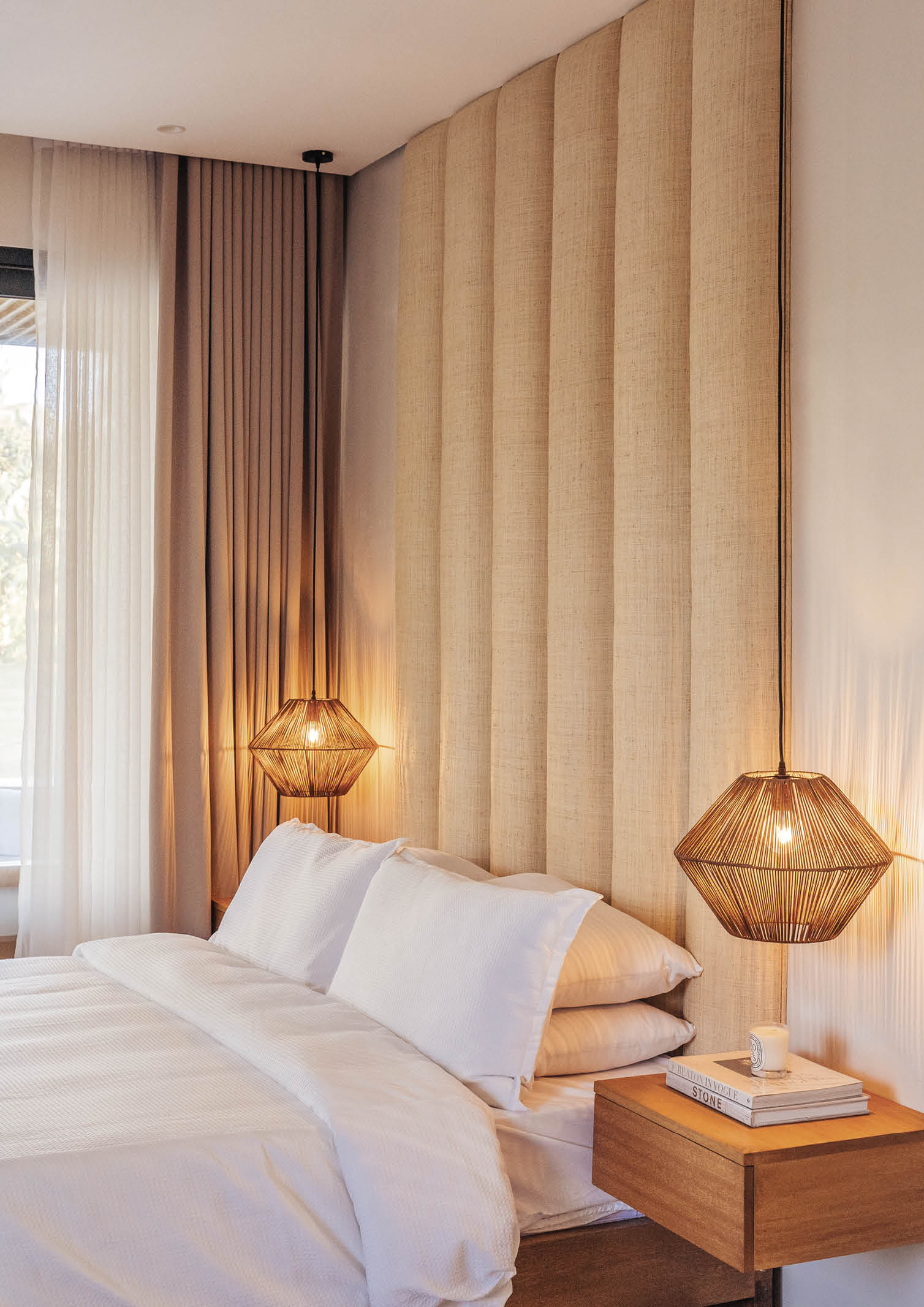

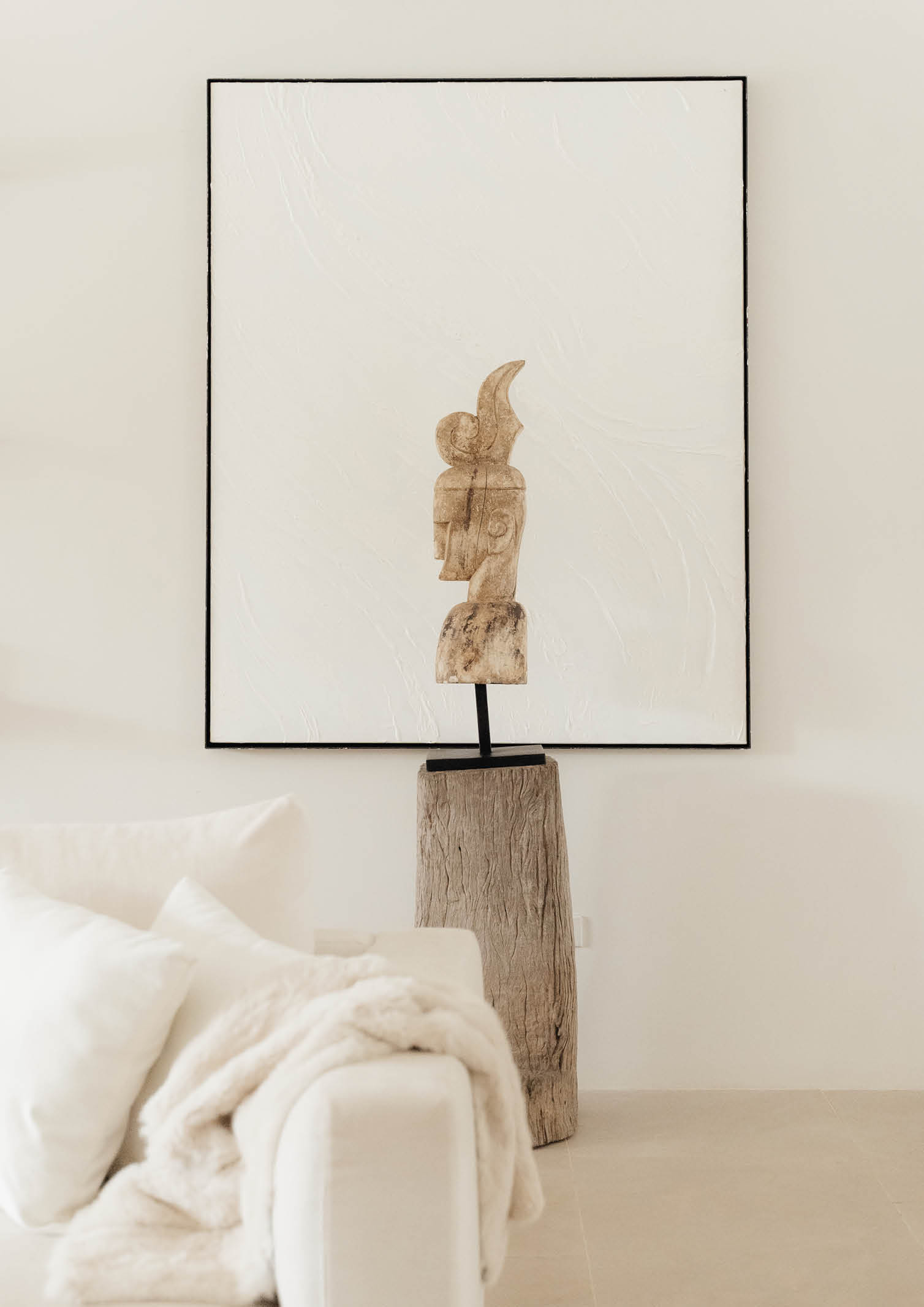
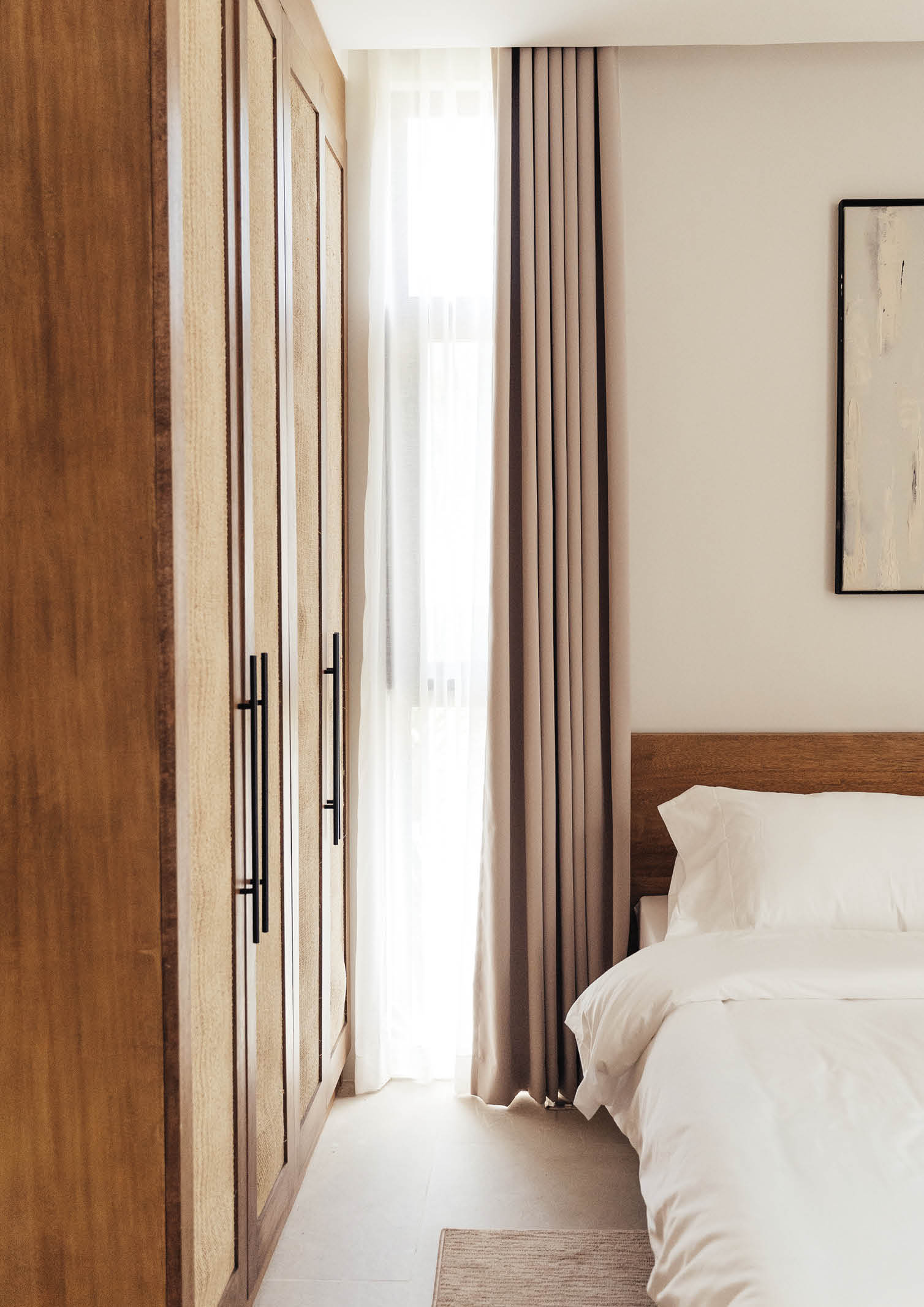

From the Design perspective, the team has given emphasis on supporting Filipino made. Most of the finishes of the project were locally sourced from local artisans and makers. For all the sash work in the project, it was done by Elikmar Wood Works from Tanay, Rizal. Their excellent craftsmanship has made all the difference in the design impact of the home.
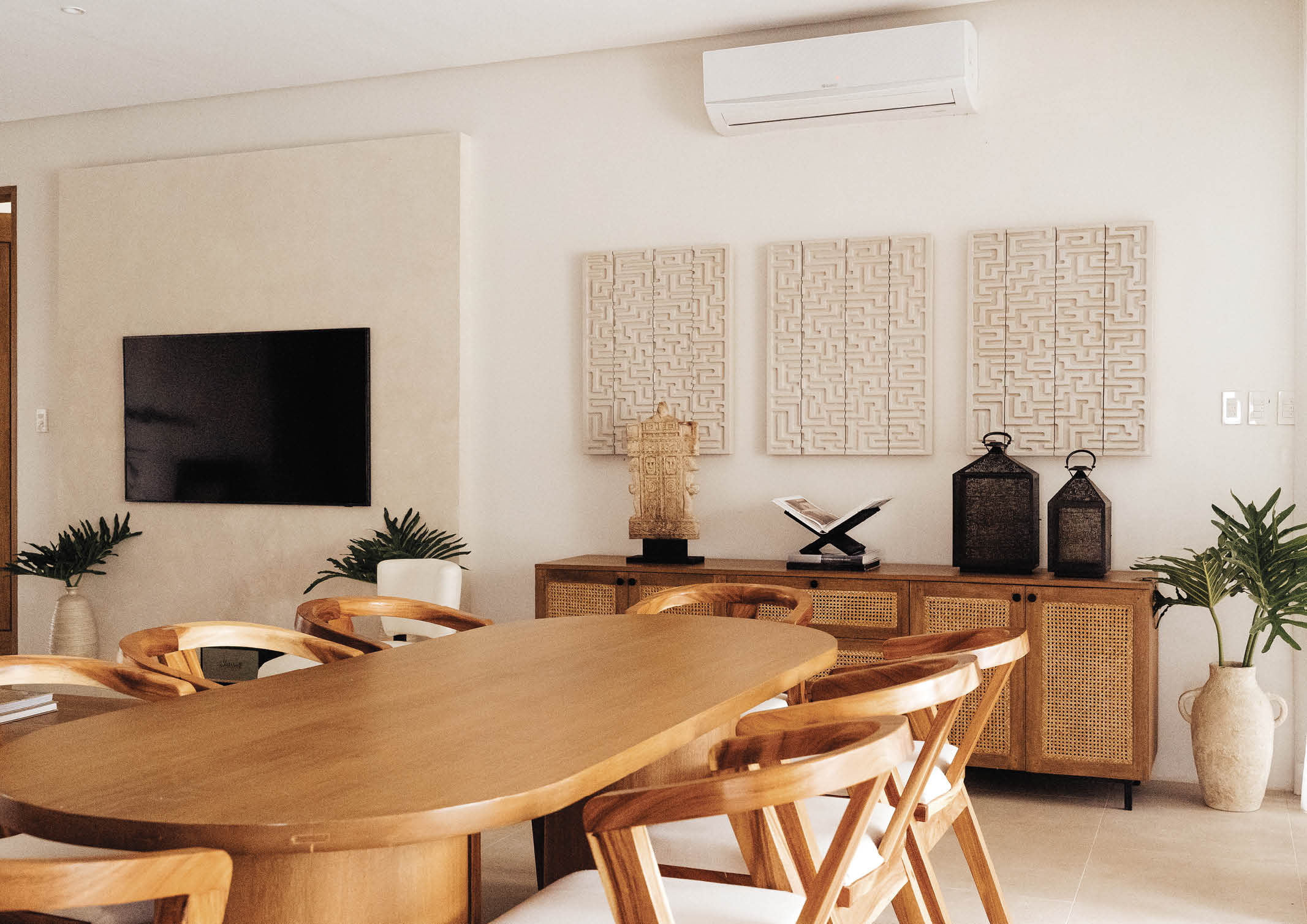
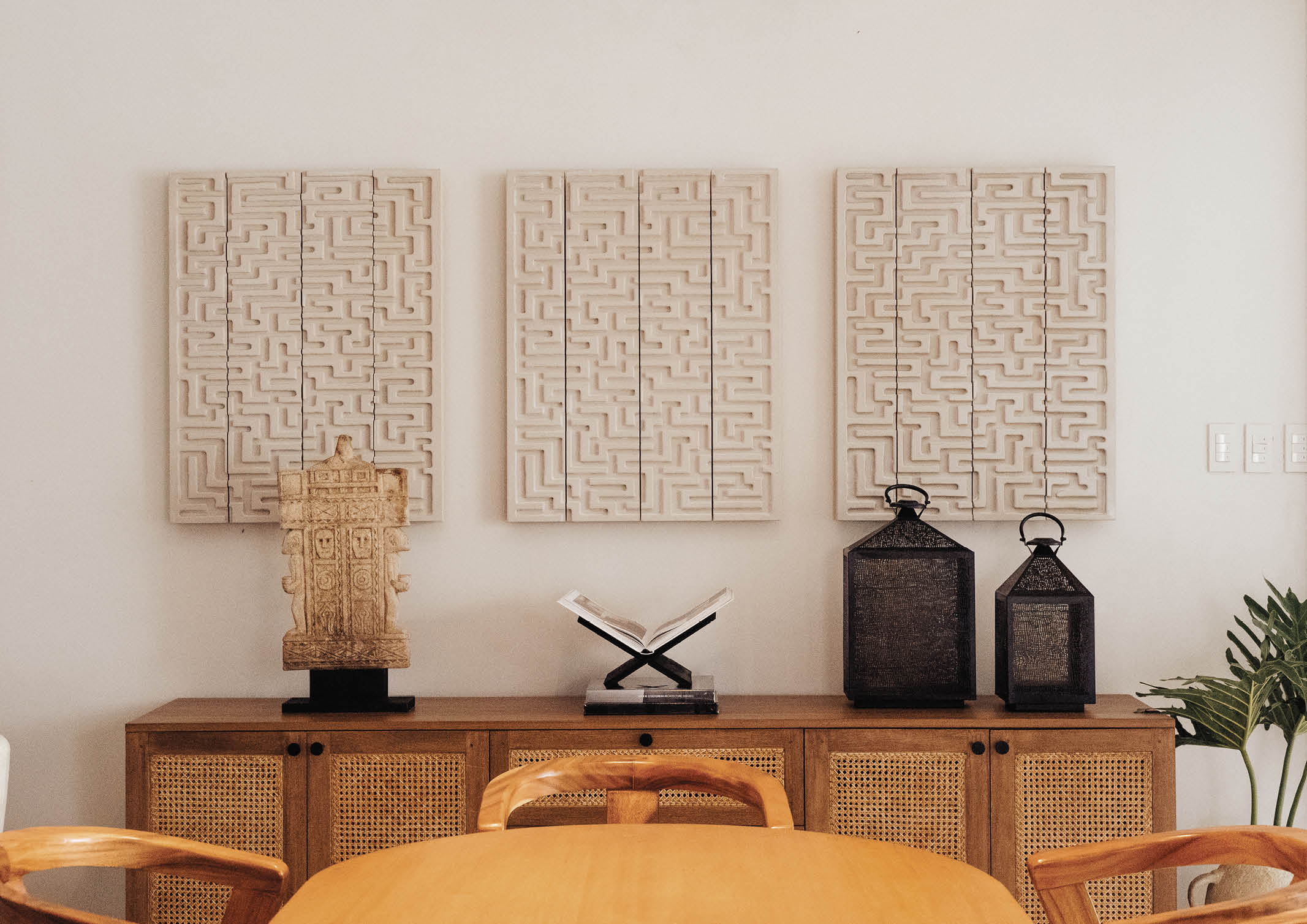
The design team has also used woven materials, like Rafia, Saguran, and even bleached rice sack material. These were done by local artisans from the Visayas Region. One of the most unique pieces of the villa is the main door handles. It is a customized battered-bronze metal door handle and knocker which was created by the artists of the Industria Gallery. They have reached out to local pottery makers, as well, for their handcrafted jars and vases that are made in Antipolo, Rizal.

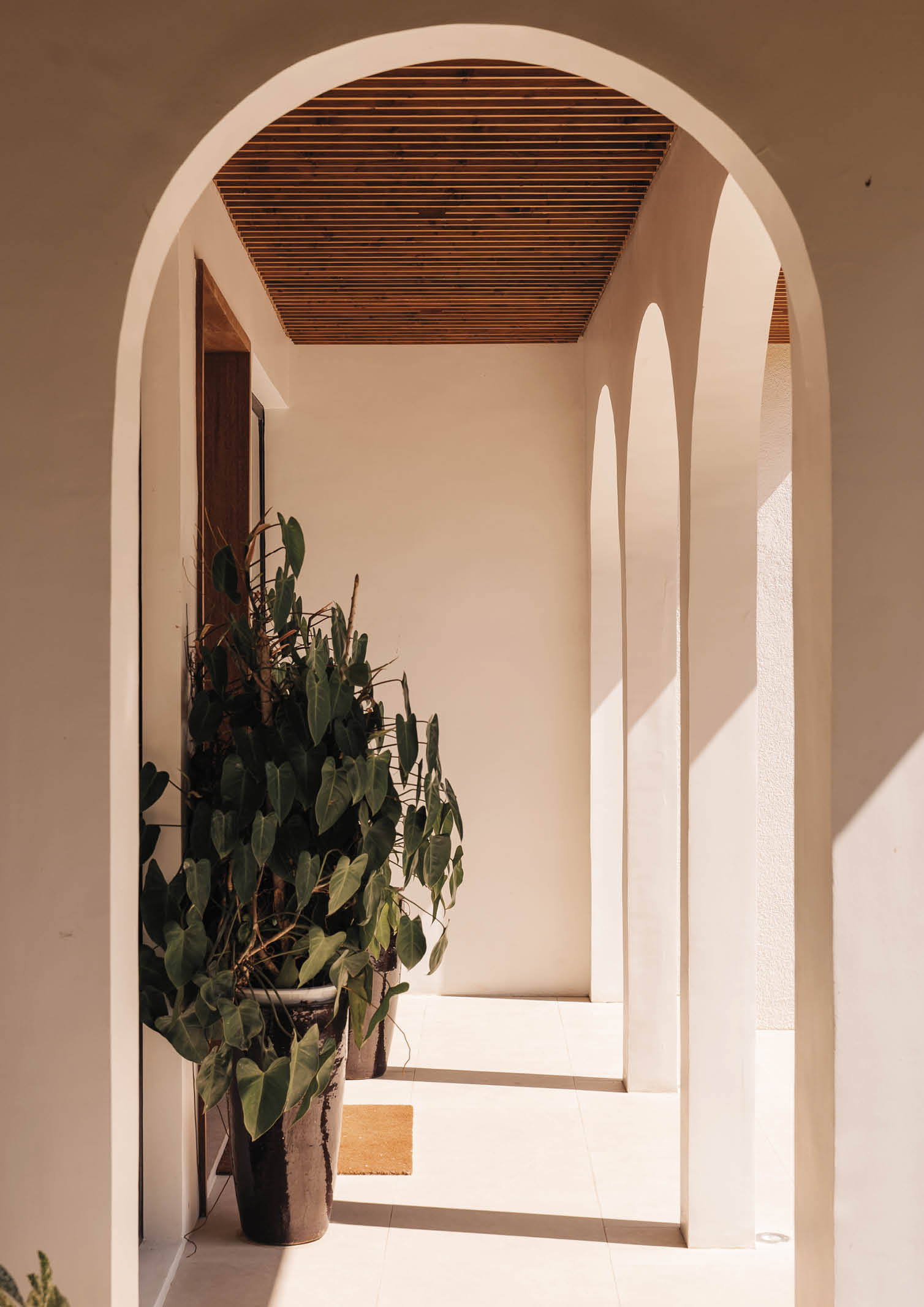

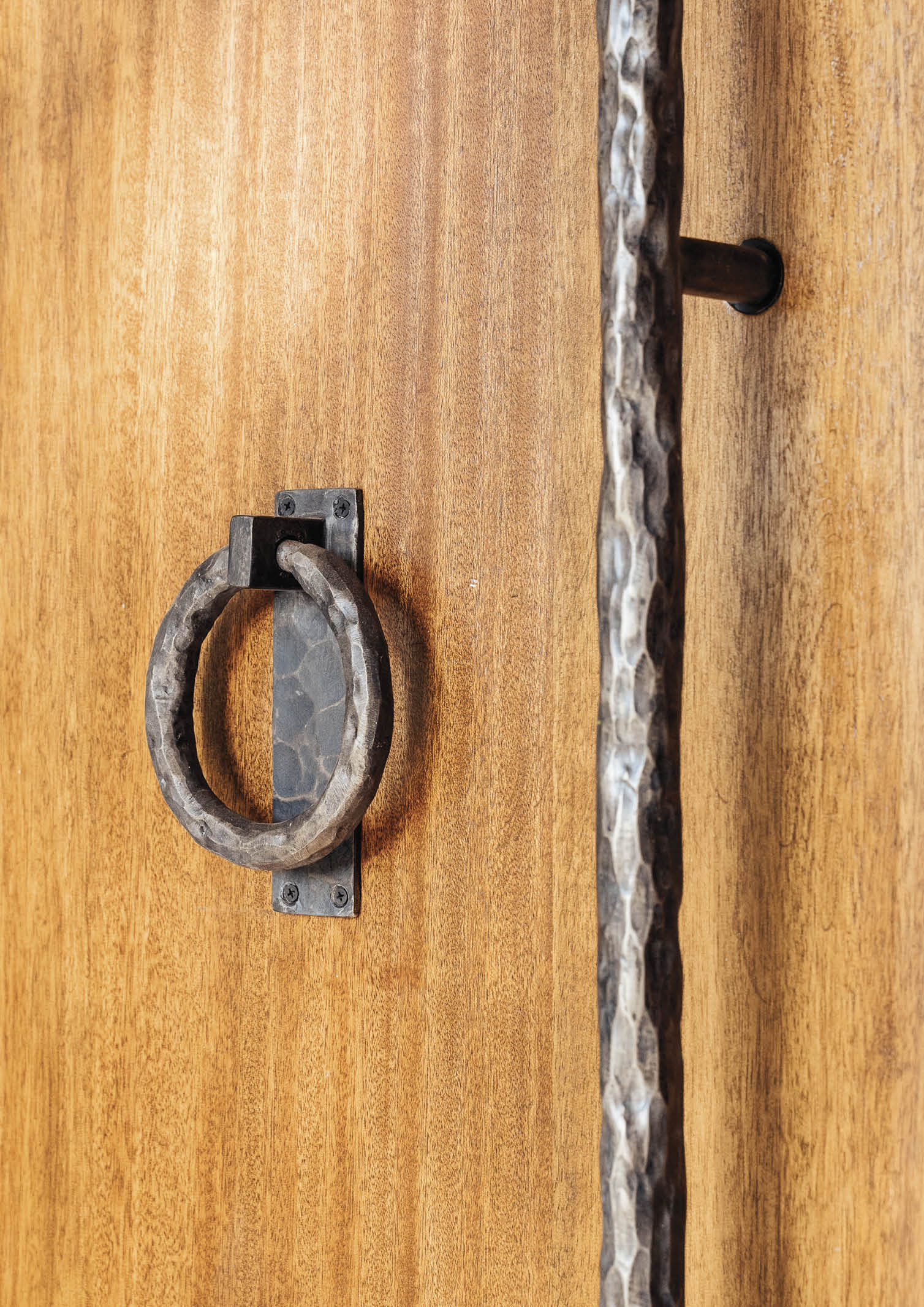
Furthermore, Cecilia highlights that sustainability has always been one of their biggest advocacies since starting the project. For the placement of the house, the team tried to be conservative on its placement and have avoided cutting any kind of tree for the villa.
Material-wise, on the other hand, the team tried to be more environmentally conscious about the materials they used. Avoiding the use of plastic and proper waste management has been done to conserve the beautiful forestry surrounding the villa. Leaning towards more naturally produced materials for the finishes of the home.



For the interior design, as much as possible, they wanted to use old and used furniture and re-purpose them as a practice of sustainability. Re-upholstering a certain chair can transform its whole look. Stripping down a certain varnish on wood furniture, to give it a new life. “A good example that we did for the project is repurposing wood planks from our fishpond deck and utilizing it for our new coffee table. It not only saves resources, but it also adds character to the area,” Cecilia shares. He also mentioned that investing in key pieces that could last a lifetime was also an important goal and in practice of a more environmentally friendly furnishing process.

Cecilia has always been passionate about architecture since he was young. Completing a beautiful project like Casa Cecilia, in collaboration and with guidance of industry professionals, is a proud moment for the architecture student who aims to do more in the future.
Photography by Jeric Rustia


